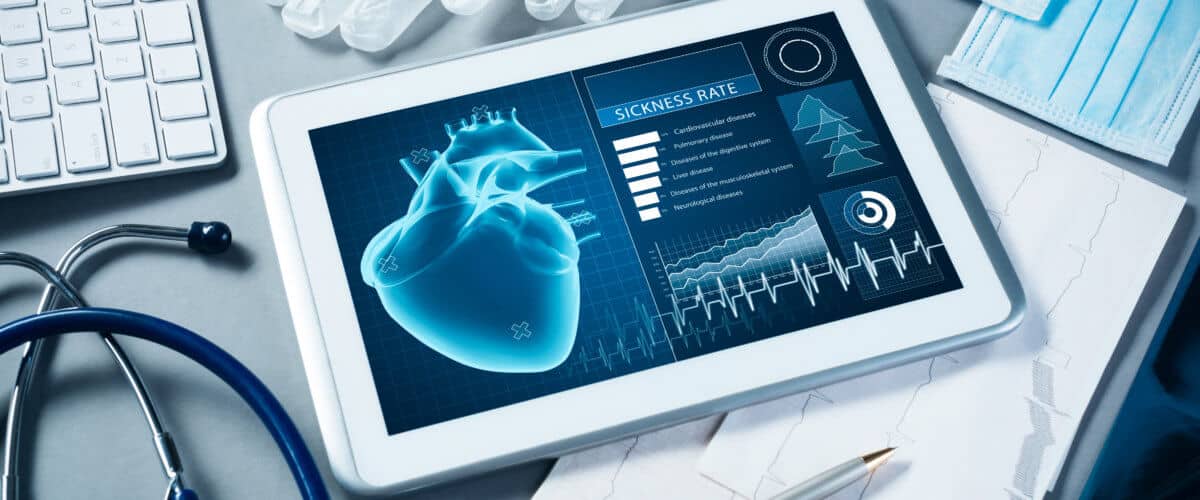In 2020, medical technology came on leaps and bounds due to the pandemic. But what can we expect in the near future? We took a look into it.
In 2018, the total healthcare spending worldwide was 8.45 trillion dollars and is forecast to cross 10 trillion dollars by 2022.
According to projections earlier made by the International Monetary Fund, the size of the economy of the world during 2020 would stand at 83.84 trillion dollars.
Given these numbers it’s safe to assume that healthcare will continue to account for approximately 9.5% of the GWP or more in the years to come, especially because the population of those ageing, continues to increase.
Given these incredible numbers, the medical technology and devices industry is innovating at a scorching pace with each one trying to keep ahead.
Before we get into this, let’s look at some titbits. The healthcare system in Denmark is rated as the best in the world. Canada is said to have the best doctors.
The three most technologically advanced hospitals in the world are El Camino USA, Fortis India and John Hopkins USA, in that order.
Of the 10 most expensive hospitals, 8 are in the US. and one each are in Australia and the UK. The US. also is the most expensive country for medical treatment. India ranks as the number one country for medical tourism.
Cutting-edge Medical Technology
Back to cutting-edge technologies, the ones that have already been introduced are impressive and several others hold promise for the future.
Covid-19 fast forwarded, considerably, the technology for telehealth services. These include virtual visits to the GP and going via your doctor’s software and with a few clicks getting your prescription.
Many of the virtual care centres are also for mental health. Interestingly, even those suffering kidney problems have been taught to give themselves dialysis via a home based procedure to avoid contact with other patients for fear of contracting the infection.
Wearable Medical Technology
Now, wearable medical technology not only includes basics such as your watch counting how many steps you take in a day but these smartwatches even collect your personal data such as heart rate, heart rhythms including atrial fibrillation, monitoring of blood oxygen saturation, sleep tracking and ECG.
There are already several wearables available for monitoring your blood pressure and you will soon have the same option in your smartwatch.
What’s also coming in wearables are biosensors which will be self-adhesive patches that will collect data on your movement, heart rate, respiratory rate and temperature.
These devices according to research, will result in more than a 80% reduction in patient deterioration due to preventable cardiac and respiratory diseases.
On the negative side, insurance companies may insist that individuals wear such devices not only for the reduction of preventable diseases but also for cutbacks in costs.
And what will become of those suffering from hypochondria, which affects close to 5% of the population.
This is not due to any fault of theirs but because they have previously gone through serious illness, especially during childhood. Anyway, there are always trade offs.
Handheld Medical Technology
Handheld devices for diagnosis via algorithms are already being used in a limited way by patients themselves who have no medical training.

These devices, extract data via many sources in our body, put them through algorithms to diagnose several health conditions which include pneumonia, diabetes, tuberculosis and even stroke.
Robotic Medical Technology
Robotics have been on the ascendancy in healthcare, most especially over the last 20 years. Not only have they been used for performing delicate surgeries especially over the last couple of decades, robots are today replacing the medical workforce right from disinfecting hospital areas to performing routine procedures.
Human-like robots are also being used for socialising among patients.
The question here is whether robots will eventually take over most of the tasks otherwise being performed by humans.
For the moment, regardless of robotics there is a shortage of medical personnel.
3D Printing Medical Technology
Over time the scope of 3D printing has reached several areas of healthcare.
This technology is now used for manufacturing precision human components such as teeth and joints.
What is being further explored is 3D bioprinting to build living human cells and tissue for regenerative medicine including for the manufacture of human organs such as the heart and the liver.
For simpler organs like the bladder 3D printing has been used for several years.
Nanotechnology
Nanotechnology is soon going to be used for Nanomedicine. This technology will address health issues at the atomic, molecular or supramolecular level. One can only imagine the potential.
At the moment, nanomedicine is being researched for imaging, sensing, diagnosis and delivery of medication.
Scientists are working on new methods to zero in on individual cells to fight different diseases including tumours, bacteria and viruses.
This is what science fiction is made of. Hopefully, we shall continue controlling the technologies and the day will never come when technologies start controlling us.
Support us!
All your donations will be used to pay the magazine’s journalists and to support the ongoing costs of maintaining the site.
Share this post
Interested in co-operating with us?
We are open to co-operation from writers and businesses alike. You can reach us on our email at [email protected]/[email protected] and we will get back to you as quick as we can.










